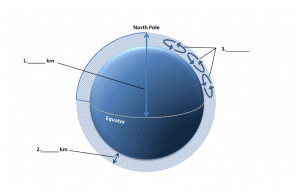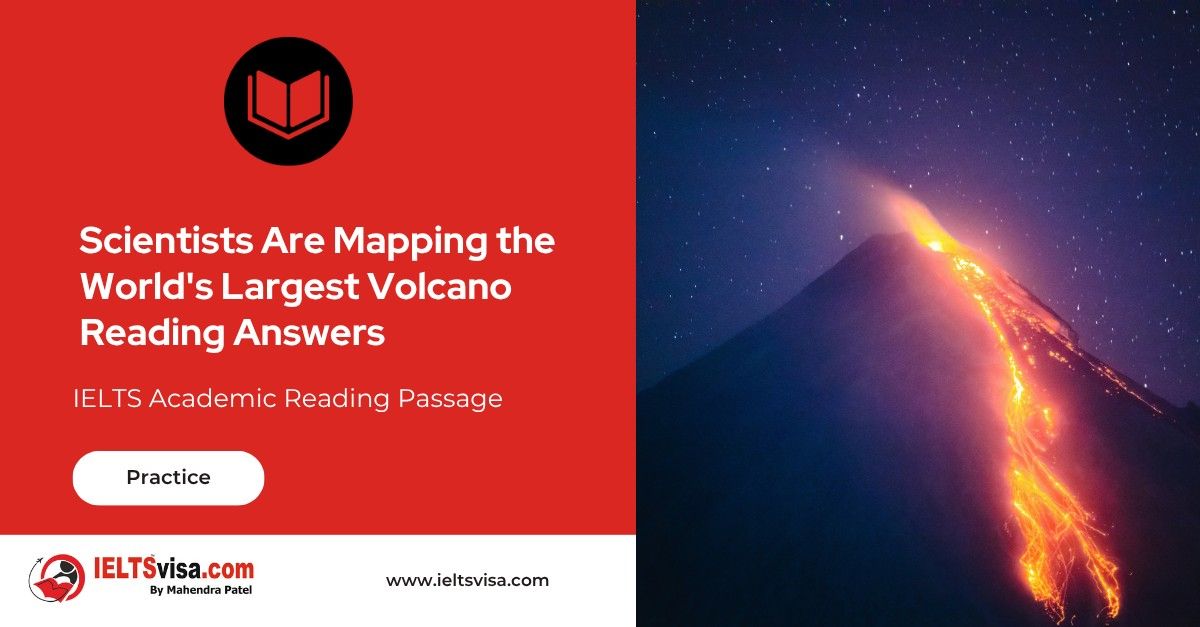Air conditioning the earth reading answers
IELTS Academic Reading Passage
- The circulation of air in the atmosphere is activated by convection, the transference of heat resulting from the fact that warm gases or fluids rise while cold gases or fluids sink. For example, if one wall of a room is heated whilst the opposite wall is cooled, air will rise against the warm wall and flow across the ceiling to the cold wall before descending to flow back across the floor to the warm wall again. The real atmosphere, however, is like a very long room with a very low ceiling.
- The distance from equator to pole is 10,000 km, while the ‘ceiling height’ to the beginning of the stratosphere is only about 10 km. The air therefore splits up into a number of smaller loops or convection cells. Between the equator and each pole there are three such cells and within these the circulation is mainly north-south.
Large-scale air-conditioning
- The result of this circulation is a flow of heat energy towards the poles and a leveling out of the climate so that both equatorial and polar regions are habitable. The atmosphere generally retains its state of equilibrium as every north-going air current is counterbalanced by a south-going one. In the same way depressions at lower levels in the troposphere are counterbalanced by areas of high pressure in the upper levels, and vice versa. The atmospheric transference of heat is closely associated with the movement of moisture between sea and continent and between different latitudes. Moist air can transport much greater quantities of energy than dry air.
- Because the belts of convection cells run east to west, both climate and weather vary according to latitude. Climatic zones are particularly distinguishable at sea where there are no land masses to disturb the pattern.
Man and the winds
- For thousands of years mankind has been dependent upon the winds: they brought rain to the land and carried ships across the seas. thus the westerly wind belts, the trade winds and the monsoon winds of the global circulation systems have been known to us for many centuries.
- As recently as the 20th century, Arab ships sailed on the south-west monsoon winds from East Africa to India and back again on the north-east monsoon winds, without need of a compass. The winds alone were sufficient. In the equatorial convergence zone (the ‘doldrums’), and in the regions around the Tropic of Cancer and Tropic of Capricorn known as the ‘horse latitudes’, sailing ships could drift for weeks unable to steer, while the ‘roaring forties’ of the South Atlantic (40-50°S) were notorious among mariners for their terrible winds.
- It was not until the development of the balloon at the end of the 18th century, however, that it became possible to study meteorological conditions at high altitudes. The balloon is still a significant research device although today it carries a radar reflector or a set of instruments and a radio transmitter, rather than the scientists themselves. Nowadays high-flying aircraft and satellites are also important aids to meteorology. Through them we have discovered the west to east jet stream. This blows at speeds of up to 500 km/h at altitudes of 9,000-10,000 m along the border between the Arctic and temperate zone convection belts.
Weather fronts
8. The circulation within the different convection cells is greater than the exchange of air between them and therefore the temperature in two cells that are close to each other can differ greatly. Consequently, the borders between the different convection cells are areas in which warm and cold air masses oppose each other, advancing and withdrawing. In the Northern Hemisphere, the dividing line between the Arctic and temperate convection zones is the polar front, and it is this which determines the weather in northern Europe and North America. This front is unstable, weaving sometimes northward, sometimes southward, of an average latitude of 60°N. Depressions become trapped within the deep concavities of this front and these subsequently move eastward along it with areas of rain and snowfall. In this way global air circulation determines not only the long-term climate but also the immediate weather.
Questions 1-3
- Label the diagram below.
- Choose NO MORE THAN TWO WORDS AND/OR A NUMBER from the passage for each answer.
- Write your answers in boxes 1-3 on your answer sheet.

Questions 4-7
- Complete the summary below using the list of words and phrases, A-L, below.
- Write the appropriate letter, A-L, in boxes 4-7 on your answer sheet.
- on land
- polar regions
- moisture
- heat
- balanced
- at sea
- offset
- pole
- equatorial regions
- latitude
- in the air
- longitude
Global air circulation spreads heat from the equator towards the 4____________ Generally, a state of balance in the atmosphere is maintained because the north-moving air currents are continually being 5________________ by the south ones. Within the system of heat transfer in the atmosphere, the climate is affected not only by 6____________ but also by the amount of moisture in the air. The most accurate geographical zone for the study of climate is 7_______, where there are no local wind systems.
Questions 8-12
- Write the correct letter, A, B, or C in boxes 8-12 on your answer sheet.
- Classify the following wind patterns according to whether the writer states they are
- A. useful
B problematic
C.neither useful nor problematic
8 ________ ‘roaring forties’
9 _________ south-west monsoon winds
10 ___________ west to east jet stream
11 _____________ ’horse latitudes’
12_____________ north-east monsoon winds
Question 13
- Answer the question below.
- Choose NO MORE THAN THREE WORDS AND/OR A NUMBER from the passage.
- Write your answer in box 13 on your answer sheet.
Which border between convection zones determines the weather in the Northern Hemisphere?
13 ______________

Solution For: Air conditioning the earth
Reading Answers
| 1 | 10,000 Kilometers |
| 2 | 10 Kilometers |
| 3 | Convection Cells |
| 4 | B. Equatorial Regions |
| 5 | G. Polar regions |
| 6 | J. Latitude |
| 7 | F. at sea |
| 8 | B |
| 9 | A |
| 10 | C |
| 11 | B |
| 12 | A |
| 13 | polar front |
Review and Practice
- Regularly practice with IELTS reading samples and time yourself to get used to the pressure of the exam.
- Review your mistakes to understand where you went wrong and how to avoid similar errors in the future.
Our Books
Master IELTS Speaking Part 1
IELTS Writing Task 1 Book
IELTS Writing Task 2 Book
Air conditioning the earth reading answers Explanation
Comin Soon
Practice IELTS Other Modules
IELTS Listening
The IELTS Listening test assesses how well you can understand spoken English in various contexts. It lasts about 30 minutes and is divided into four sections with a total of 40 questions. The listening tasks become increasingly difficult as the test progresses.
IELTS Academic Reading
The IELTS Academic Reading section assesses your ability to understand and interpret a variety of texts in academic settings. It is designed to evaluate a range of reading skills, including skimming for gist, reading for main ideas, reading for detail, understanding inferences, and recognizing a writer's opinions and arguments.
IELTS Speaking
The IELTS Speaking test assesses your ability to communicate in English on everyday topics. It lasts 11-14 minutes and consists of three parts: introduction, cue card, and a discussion based on the cue card topic.
IELTS General Reading
IELTS General Reading tests your ability to understand and interpret various types of texts. Here are some key areas and types of content you can expect to encounter in the reading section, along with tips for effective preparation.
IELTS Academic Writing Task 1
In IELTS Academic Writing Task 1, you are presented with a visual representation of information, such as graphs, charts, tables, or diagrams, and you are required to summarize, compare, or explain the data in your own words.
IELTS General Writing Task 1
In IELTS General Writing Task 1, you are required to write a letter based on a given situation. The letter can be formal, semi-formal, or informal, depending on the prompt. Here’s a breakdown of the key components to include in your letter
IELTS Academic Writing Task 2
In IELTS Academic Writing Task 2, you are required to write an essay in response to a question or topic. Here’s a guide to help you understand the essential elements of this task
IELTS Exam Tips
To succeed in the IELTS exam, practice regularly, familiarize yourself with the test format, improve your vocabulary, develop time management skills, and take mock tests to build confidence.
Grammer for IELTS
Grammar is the foundation of effective communication in English. Understanding tense usage, subject-verb agreement, and sentence structure enhances clarity and coherence in writing and speaking.
Vocabulary for IELTS
Vocabulary plays a crucial role in the IELTS (International English Language Testing System) exam, especially in the Speaking and Writing sections. Here’s an overview of why vocabulary is important and how it impacts your performance
RECENT IELTS SAMPLES QUESTIONS AND ANSWERS
Walking with dinosaurs
Peter L. Falkingham and his colleagues at Manchester University are developing techniques that...
Money as the Unit of Amount Reading Answers
The most difficult aspect of money to understand is its function as a unit of account. In...
WEATHERING IN THE DESERT
In the deserts, as elsewhere, rocks at the earth's surface are changed by weathering, which...
Nature on Display in American Zoos
The first zoo in the United States opened in Philadelphia in 1874, followed by the Cincinnati...
Can We Prevent the Poles From Melting
Such is our dependence on fossil fuels, and such is the volume of carbon dioxide we have...
Scientists Are Mapping the World’s Largest Volcano
(A) After 36 days of battling sharks that kept biting their equipment, scientists have...













